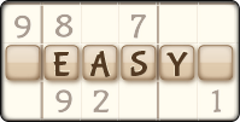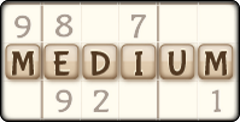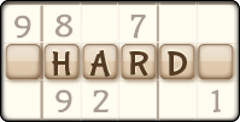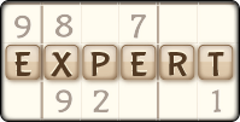How to Solve Sudoku Mathematically: A Logical Approach to Puzzles
Sudoku is one of the most enjoyable and brain-teasing ways to pass time when it comes to math and logic games. It’s a fantastic mental workout and you don’t need to be a genius at maths or a puzzle wizard to solve them–all you need is a bit of patience, logic, and a willingness to experiment.
So in this blog post, we’re going to talk about some of the best ways to break down the process of solving Sudoku puzzles. Whether you're just getting started or you've been dabbling in puzzles for a while, this guide will give you a clear and easy-to-follow approach to solving Sudoku logically.

Understanding the Rule of 3
Before you can start cracking Sudoku puzzles like a pro, you need to understand the basic mechanics of the game. The "Rule of 3" is one of the most useful tools in your Sudoku-solving toolkit. It’s all about narrowing down the possibilities for a number in a specific row, column, or box by looking at how numbers are arranged around them.
The key idea is that each row, column, and 3x3 box in a Sudoku grid must contain every number from 1 to 9 exactly once. If you can eliminate the impossible options and focus on what’s left, then you’re already halfway there! The Rule of 3 isn’t complicated to understand, but it does require a bit of observation and logic to apply.
The great thing about learning this rule is that it’s like solving a little mystery. Once you get the hang of it, you’ll start spotting opportunities to use it everywhere!
How the Rule of 3 Works
Now that we know what the Rule of 3 is, let’s break it down into bite-sized steps.
- Look at a row, column, or box. Pick one area of the grid to focus on.
- Spot the numbers already placed. For example, if the number 5 is already in the first row, it can’t go there again.
- Eliminate possibilities. Use the existing numbers to rule out where certain numbers can or cannot go.
- Find the "only spot." Sometimes, the Rule of 3 will show you that there’s only one place left for a particular number.
For instance, if you’re working on a 3x3 box and you’ve already placed a 5 in two of the rows, there’s only one row left where the 5 can go. Similarly, if there’s already a 5 in a column and a row, the intersection of those areas gives you the exact spot for that 5 in the box.
This rule works best when combined with a good dose of patience and careful observation. It’s not always obvious at first, but once you start noticing patterns, you’ll see just how powerful this little rule can be!
Identifying Key Patterns
Solving Sudoku is like being a puzzle detective, and spotting patterns is your magnifying glass! The Rule of 3 works because Sudoku grids are full of patterns. Here are a few key patterns to watch for:
- Single candidates: A number can only go in one cell of a row, column, or box.
- Naked pairs and triplets: If two or three cells in a row, column, or box can only hold the same two or three numbers, those numbers can’t appear anywhere else in that area.
- Pointing pairs or triples: When a number can only fit in one line of a 3x3 box, you can eliminate it as an option for that line in other boxes.
Patterns are your puzzle’s way of telling you where to look next. The more you practice, the easier it becomes to see them. Once you train your eyes to spot these, solving Sudoku will feel so much more intuitive.
Applying the Rule in Puzzles
It’s one thing to know about the Rule of 3 and it’s another to actually use it in a puzzle. Let’s walk through an example to see how it works in action.
Imagine you’re working on a Sudoku grid, and you notice that the number 6 appears in two rows of a 3x3 box but not in the third row. Using the Rule of 3, you can look at the column possibilities and figure out where that 6 must go.
Here’s a step-by-step approach to applying the rule in a real puzzle:
- Scan the grid: Look for rows, columns, or boxes where numbers are already well-distributed.
- Focus on one number: Start with an easy one, like a number that already appears multiple times in the grid.
- Use the Rule of 3 to eliminate options: Look at where numbers can and can’t possibly be by eliminating options using whatever information you have on the board.
- Repeat the process: Once you’ve placed a number, it opens up new opportunities for other numbers.
Remember, Sudoku is a game of patience. Don’t rush it. Instead, enjoy the process of figuring out where each number fits like a piece in a big, logical jigsaw puzzle.
Common Mistakes to Avoid
Sudoku can feel frustrating if you keep making the same mistakes. But don’t worry–we’ve all been there at some point. There are times where you might feel like you just have to guess and hope things go well, but there are certainly a few ways to help make things easier. So here are a couple of common mistakes that you should try to avoid.
- Guessing too early: Sudoku is a logic game, not a guessing game! If you’re unsure, take a step back and double-check your work. There aren’t many situations in which you have to guess unless you’re playing with very few numbers at the start.
- Overlooking possibilities: Always scan the grid carefully. It’s easy to miss a clue when you’re in a hurry. If you’re playing Sudoku on the internet, then there are probably some tools and features that let you highlight different numbers so you can have an easier look at them.
- Forgetting to double-check: Placing a number in the wrong spot can throw off the entire puzzle if it’s wrong. Check and recheck as you go so you don’t spend time untangling a mess!
Mistakes are part of learning, so don’t be too hard on yourself. Just remember that every misstep is a chance to improve your skills.
Integrating with Other Strategies
The Rule of 3 is a fantastic tool to help you beat Sudoku puzzles, but it’s not the only one in your Sudoku-solving arsenal! To tackle the tougher puzzles, you’ll need to combine it with other strategies so that you have the best chances of winning. Here are a few complementary techniques that can help you out:
- Pencil marks: Write down all possible numbers for each empty cell. This makes it easier to spot where the Rule of 3 can be applied.
- Cross-hatching: Use your pencil marks to cross-check rows and columns for opportunities to place a number.
- Box-line reduction: Look for numbers that can only fit in one row or column of a 3x3 box and eliminate them from the rest of that row or column.
By mixing and matching these strategies, you’ll be able to solve even the hardest Sudoku puzzles. It’s all about keeping an open mind and trying different approaches, mixing and matching techniques so you know when to best use them!
Practice Examples
The best way to master the Rule of 3 is through consistent practice, and online Sudoku platforms like 24/7 Sudoku are amazing tools to help sharpen your skills and help you build up your ability to notice patterns. Not only do they offer puzzles for every skill level, but they also include helpful features that can make learning the Rule of 3 easier and more interactive!
Example 1: Start with Easy Puzzles
Begin with a simple puzzle on 24/7 Sudoku. Set the difficulty to "Easy" and focus on one number, such as 5. Use the Rule of 3 to identify all the places where 5 can go in the grid. To make this even easier, you can click on the number 5 on the board and it’ll highlight every 5. That way, you can easily identify the different rows and columns that a 5 is located on, making it really easy for you to determine where they could possibly go.
If you don’t have much luck with a number because there aren’t many of them on the board, then you can try a different number. Remember that you’re not just looking at the rows and columns, but you can also check within the boxes as well.
Example 2: Tackle a Medium Puzzle
When you’re ready for a tougher challenge, try a “Medium” puzzle instead. Here’s where you can combine the Rule of 3 with other tools like pencil marks. Many online Sudoku platforms let you use "notes" to jot down possible numbers for each cell, and 24/7 Sudoku is no different!
Simply click on an empty square that you want to try to solve, then click on the pencil icon to enable note mode. Now when you click on the numbers, they’ll appear as smaller numbers inside the box and you’ll see every corresponding number highlighted as well. This will help you identify all of the possible numbers that could go in the box.
As you eliminate options using the Rule of 3, you’ll notice how the puzzle starts to come together. It’s incredibly satisfying to watch the grid fill up as your logic pays off!
Why Online Sudoku is Great for Practice
- Instant feedback: Online platforms let you know if you’ve made a mistake, so you can correct it right away instead of getting stuck later.
- Difficulty levels: You can gradually work your way up from beginner puzzles to advanced ones as your confidence grows.
- Undo and restart options: If you’re experimenting with strategies like the Rule of 3, the ability to undo a move or reset the puzzle is invaluable.
- Access anytime: With online Sudoku, you can practice whenever you have a few spare minutes, whether on your computer, tablet, or phone.
Practice makes perfect, and online tools like 247 Sudoku are a fun and convenient way to get all the practice you need. As you work through puzzles, you’ll notice yourself solving them faster and with more confidence. So go ahead, log on, and start practicing–the Rule of 3 is waiting for you to master it!
Tips for Effective Use
Now that we’re approaching the end of the post, here’s a quick recap to help drive home all of those important things we learned about the Rule of 3.
- Start simple: Focus on rows, columns, or boxes that already have a good number of numbers filled in. These areas are easier to work with and often give you quicker wins, building confidence as you progress.
- Be consistent: Approach the grid methodically. Scan systematically, row by row, column by column, or box by box, rather than jumping around. This ensures you don’t miss potential placements.
- Stay patient: Sudoku is about logic and observation, not speed. Rushing can lead to mistakes, so take your time and enjoy the problem-solving process.
- Practice regularly: Like any skill, the more you practice, the better you’ll get. Dedicate time to puzzles of varying difficulties to sharpen your pattern-recognition skills and boost your confidence!
And most importantly, have fun! Sudoku is meant to be an enjoyable challenge, so don’t stress if a puzzle takes longer than expected. You’re building skills and stretching your brain, which is always a win.
Conclusion
Sudoku might seem tricky at first, but with tools like the Rule of 3 and a logical approach, it becomes a rewarding puzzle that anyone can enjoy. Whether you’re solving a simple puzzle on your phone or tackling a tricky one in a newspaper, these techniques will help you make sense of the grid and place those numbers with confidence.
Sudoku Levels
Seasonal Sudoku Games
More Games
Sudoku News
Disclaimer
DISCLAIMER: The games on this website are using PLAY (fake) money. No payouts will be awarded, there are no "winnings", as all games represented by 247 Games LLC are free to play. Play strictly for fun.





































